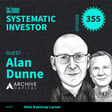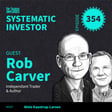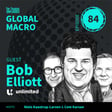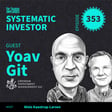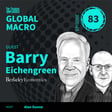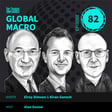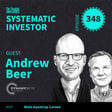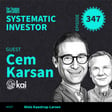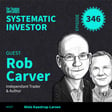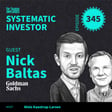
SI350: Why All Roads Lead to Higher Yields ft. Alan Dunne
Why are markets still priced as if the old world is coming back? Alan Dunne and Niels Kaastrup-Larsen examine the case for structurally higher yields — not as a risk, but as the regime. Drawing from Alan’s recent writing, they trace how debt levels, policy incentives, and investor complacency have converged into a feedback loop that central banks may no longer control. From Japan’s bond signals to the quiet retreat of fiscal discipline in the U.S., this episode maps a shift that’s already underway. For investors still relying on yesterday’s models, the risk isn’t missing the turn...it’s not seeing that we’ve already made it.
-----
50 YEARS OF TREND FOLLOWING BOOK AND BEHIND-THE-SCENES VIDEO FOR ACCREDITED INVESTORS - CLICK HERE
-----
Follow Niels on Twitter, LinkedIn, YouTube or via the TTU website.
IT’s TRUE ? – most CIO’s read 50+ books each year – get your FREE copy of the Ultimate Guide to the Best Investment Books ever written here.
And you can get a free copy of my latest book “Ten Reasons to Add Trend Following to Your Portfolio” here.
Learn more about the Trend Barometer here.
Send your questions to info@toptradersunplugged.com
And please share this episode with a like-minded friend and leave an honest Rating & Review on iTunes or Spotify so more people can discover the podcast.
Follow Alan on Twitter.
Episode TimeStamps:
00:13 - Introduction to Systematic Investing
10:52 - Global Macro Picture: All Roads Lead to Higher Yields
17:26 - The Evolution of Economic Policy and Debt Dynamics
29:55 - The Influence of Economic Policies on Inflation and Growth
40:13 - Market Trends and Investor Sentiment Survey
45:08 - Navigating Market Expectations and Historical Trends
59:34 - The Importance of Diversification in Investment Strategies
Copyright © 2024 – CMC AG – All Rights Reserved
----
PLUS: Whenever you're ready... here are 3 ways I can help you in your investment Journey:
1. eBooks that cover key topics that you need to know about
In my eBooks, I put together some key discoveries and things I have learnt during the more than 3 decades I have worked in the Trend Following
